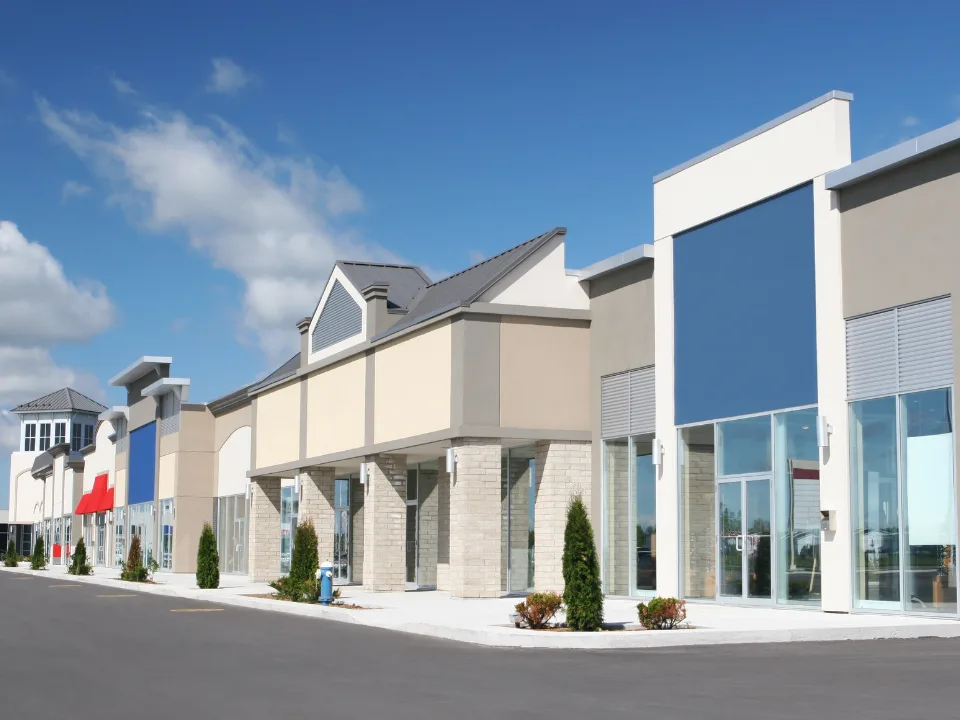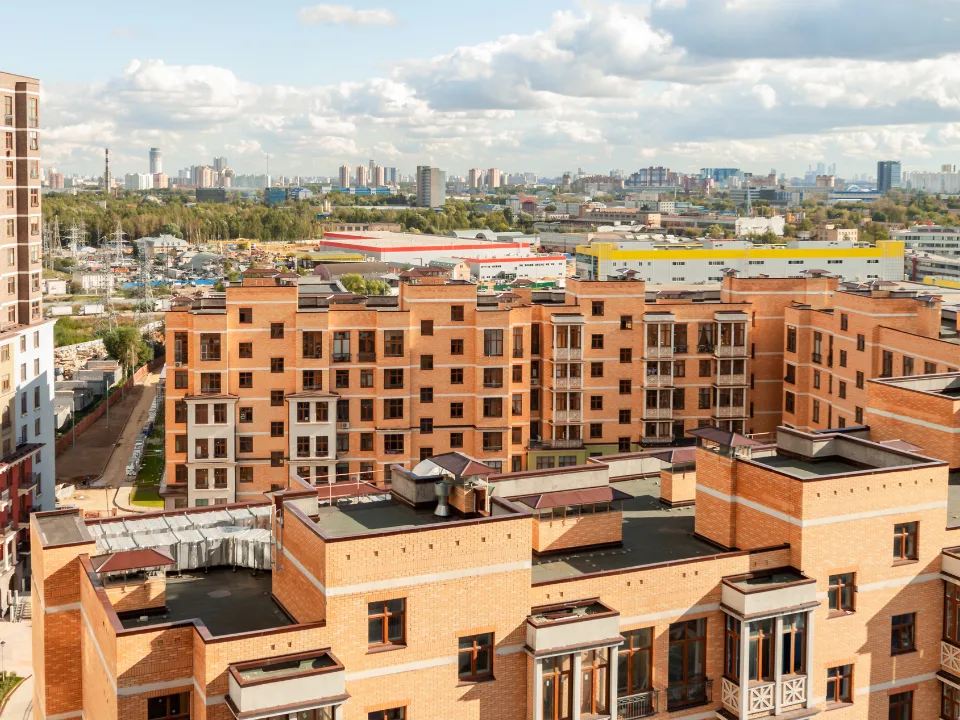Multifamily Construction Cools, Starts Drop 15.7%
Multifamily construction is cooling off, pulling down U.S. residential building activity as demand shifts and interest rates rise.
Good morning. Multifamily construction is cooling off, pulling down U.S. residential building activity as demand shifts and interest rates remain uncertain.
Today’s issue is brought to you by Boardwalk Wealth.
You currently have 0 referrals, only 1 away from receiving B.O.T.N Multifamily Deal Screener .
Market Snapshot
|
|
||||
|
|
*Data as of 10/30/2024 market close.
MARKET INSIGHTS
Multifamily Development Slowdown Impacts Residential Market
The pace of multifamily development has cooled significantly, according to RealPage, slowing residential construction across the U.S. over the past year.
Construction slowing: According to the Census Bureau and HUD, annualized multifamily housing starts were down 15.7% year-over-year as of September 2024. While single-family starts rose modestly by 5.5% annually, declines in multifamily activity contributed to a 0.5% overall drop in residential starts last month.

Permits and completions: Multifamily permitting saw a sharp 10.8% decrease in September, down 17.4% annually, with major regions showing declines. In contrast, single-family permitting held steady. While multifamily completions are up 42% YoY, they dipped month-to-month, and single-family completions remained slightly higher than last year.
Regional market shifts: The Northeast saw an unexpected spike in multifamily starts, up 183%, while the West, South, and Midwest recorded substantial declines. The West had the steepest decline, with permits down 26.7%, reflecting the impact of elevated mortgage rates as regions reduce multifamily projects.

Zoom in: Top markets like New York and Austin remain active, but many cities—including Dallas, Houston, and Washington, DC—have seen significant declines in multifamily permits. New York City led with 31,381 units permitted, up 35% year-over-year, while Phoenix, Atlanta, and Los Angeles saw notable drops.
➥ THE TAKEAWAY
Big picture: Higher interest rates and changing demand are redefining multifamily construction, especially in major cities. As Jay Parsons points out, permit numbers only tell part of the story, with local regulations and financing timelines playing critical roles in actual project starts. Still, permit data provides clues on which markets could see a quicker supply recovery.
TOGETHER WITH BOARDWALK WEALTH
Stacking Unfair Advantages
Rather than reinventing the wheel, why not partner with an operator already plugged into under-the-radar submarket networks?
Pick the best opportunity for you:
-
Tax Credits To Directly Offset W2 Income: Multi-phased development gives 2024 & 2025 tax breaks due to energy efficient construction
-
Deep Distressed Discounts: Sun Belt portfolio acquired directly from lender at ~40% below recently appraised value
-
75-90% Profit Splits For Ground Breakers: 500+ unit premier development on family land of war hero
Boardwalk Wealth syndications are stewarded by Omar Khan's operations-first approach. Visit the link to learn more and see our deals.
*Please see the advertising disclosure at the bottom of this newsletter.
✍️ Editor’s Picks
-
Treasury tension: Goldman Sachs cautions that a 10-year Treasury yield nearing 4.30% could lead to investor risk aversion, impacting equity returns and possibly stalling interest rate cuts.
-
Chicago’s shortfall: Mayor Brandon Johnson proposed a budget that avoids union layoffs and relies on property tax increases and TIF surplus funds to address a nearly $1 billion deficit.
-
Slowing growth: The U.S. economy grew at a 2.8% annualized rate in Q3, slightly below expectations, driven by strong consumer spending and government outlays amid ongoing inflation concerns.
-
Cooling home prices: The Case-Shiller Index reports a slight August dip in U.S. home prices, though rising mortgage rates may drive prices back.
-
Bizarre foreclosure: Lender ACF L5-M is auctioning Shidler Group’s purchase options on nearly 20 hotels rather than the properties themselves, with the sale set for November 6.
-
Job creation: Private sector hiring soared in October, with ADP reporting 233,000 new jobs, surpassing forecasts despite hurricanes and labor strikes.
🏘️ MULTIFAMILY
-
Goldman refi: Goldman Sachs Alternatives provided a $55.5 million refinancing for Urban East, a 381-unit apartment complex in Austin, as the city’s multifamily market faces declining rents and low occupancy rates.
-
Mounting pressure: Elie Schwartz faces mounting legal and financial woes, including halted investor payouts and federal investigations into alleged $50M embezzlement.
-
Backing affordable: Brooklyn’s Borough President urges more affordable units, not fewer, in Apex’s 244-unit Park Slope project.
🏭 Industrial
-
Bangkok expansion: Equinix plans to invest $500 million over ten years in Bangkok, Thailand, with two new data centers to meet Southeast Asia’s growing digital demands.
-
Iowa’s data hub: COPT Defense Properties plans a 1GW data center campus on 365 acres near Des Moines, Iowa, with phased development to support the region's growing tech presence.
🏬 RETAIL
-
Retail conversion: Easton Group purchased the former Sears at Miami International Mall for $17.1M, planning up to 500 apartments as part of its ongoing investment in South Florida retail properties.
-
Gold Coast: Luxury retailer Kith has leased a 17,600-square-foot building on Chicago’s Walton Street, marking a notable expansion as the Gold Coast retail district attracts high-end brands.
🏢 OFFICE
-
Back to work: BXP CEO Owen Thomas sees office return mandates, led by firms like Amazon, reducing remote work’s impact on office demand, with leasing activity up 25% year-over-year.
-
Google cuts back: Alphabet has spent $607M this year to reduce office space as it reallocates resources toward AI, while still investing selectively, including a planned 2026 move into Chicago’s Thompson Center.
📈 CHART OF THE DAY

This chart shows the changing distribution of outstanding commercial loan balances as a share of CET1 (Common Equity Tier 1) across quarterly snapshots from 2020 to 2023, with a peak in near-term maturities around 2025 and a gradual decline in balances maturing over the long term.

You currently have 0 referrals, only 1 away from receiving B.O.T.N Multifamily Deal Screener .
What did you think of today's newsletter? |


















